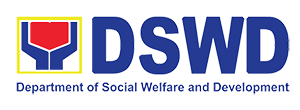
Two child development centers (CDCs) were built in 2017 by the community members with the assistance from DSWD’s KALAHI-CIDSS and their local government unit (LGU).
Recognizing the importance of education in transforming lives, villagers of Barangays Natubleng and Amgaleyguey in Buguias, Benguet worked together to build their own child development centers (CDCs).
In 2016, the Department of Social Welfare and Development (DSWD) brought its Kapit-Bisig Laban sa Kahirapan—Comprehensive and Integrated Delivery of Social Services (KALAHI-CIDSS) program to these remote barangays.
Through the program, two facilities were built, giving children a safe space to take their first steps into formal education and equipping the community with resources to nurture the next generation.
Before the completion of the CDC in Barangay Natubleng in 2017, Danny Sebio, the Barangay Sub-Project Management Chairperson (BSPMC), narrated to the Kwento ng Pag-Asa at Pagbabago (#KPAP), an award-winning online documentary of the DSWD, that they do not have a facility for their 3-year-old children where they can learn.
“Noong matapos na ito, malaki ang naging tulong sa amin. Wala kasi kaming building at humihiram lang kami ng pinapasukan ng mga pupils, ng day care,” Danny recalled.
More than 30 community volunteers joined hands, working tirelessly to bring the project to life.
The CDC has since become a haven for young learners. It offers a space where children as young as three years old can begin their educational journey, giving them a head start in a region where access to schools is often hindered by distance and terrain.
“The CDC is very important because if you have a day care center in the community, at least the children can go where they can familiarize with colors, and most especially, the values,” Elizabeth Calabias, the child development worker in Natubleng, told KPAP.
Divina Mendoza, one of the KALAHI-CIDSS volunteers and a parent of a child enrolled in the CDC said having the facility also helped parents to have time to do household chores and earn a living.
“Sa araw-araw na pagpasok nila, syempre nakakagaan din kasi once na pumasok sila, may time na rin ako sa trabahong bahay, sa gawain sa pagsasaka, may time na ako na magtanim at mag-propagate,” Divina said.
Similarly, Barangay Amgaleyguey witnessed a significant transformation through the DSWD’s KALAHI-CIDSS.
What was once an isolation center at the height of the COVID-19 pandemic is now a CDC, serving around 20 children annually. The building’s repurposing reflects the resilience and resourcefulness of the community, which saw the potential to create something meaningful out of adversity.
“Mahalaga kasi sa mga bata kasi nagsisimula pa sila. Sa three years old don na nagsisimula yung development ng kanilang brain kaya mas maganda kung turuan sila nang mas maaga,” Marinell Gasmeña, the child development worker in Barangay Amgaleyguey, said.
The DSWD’s KALAHI-CIDSS uses the community-driven development (CDD) strategy which allows communities to gain control over decisions and resources. Through the program, community members actively participate in identifying and prioritizing their community’s concerns and allowing them to design, implement, and manage solutions to their priority problems.
The #KPAP bagged the Public Service Campaign – National Level Award in the first-ever ‘Parangal: Gawad ng Kahusayan sa Komunikasyong Pampubliko’ sponsored by the Presidential Communications Office (PCO) held last December.
The online documentary is a joint production of the Traditional Media Service (TMS) and the Digital Media Service (DMS) under the DSWD Strategic Communications Group. It is hosted by TMS Director Aldrine Fermin. (YADP)


